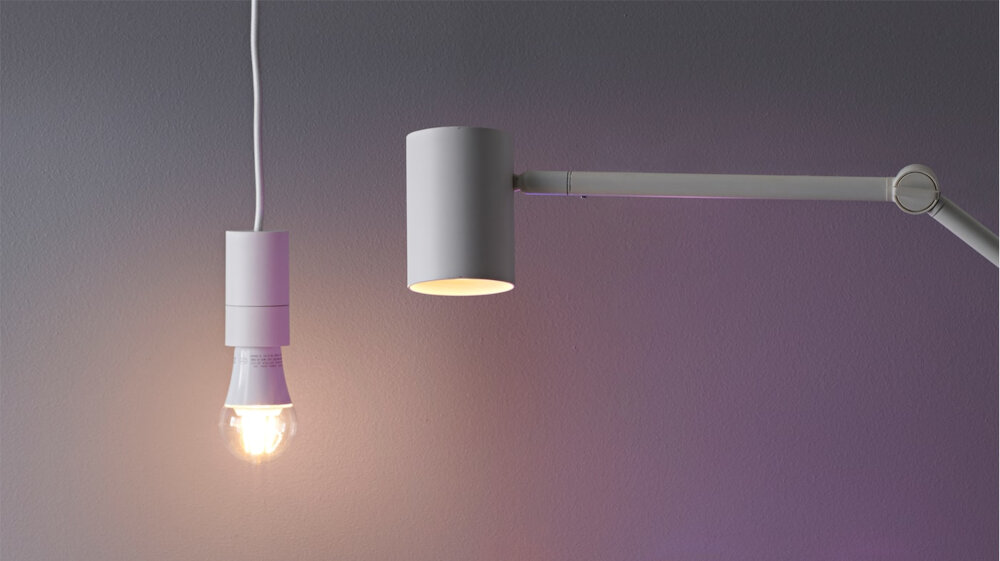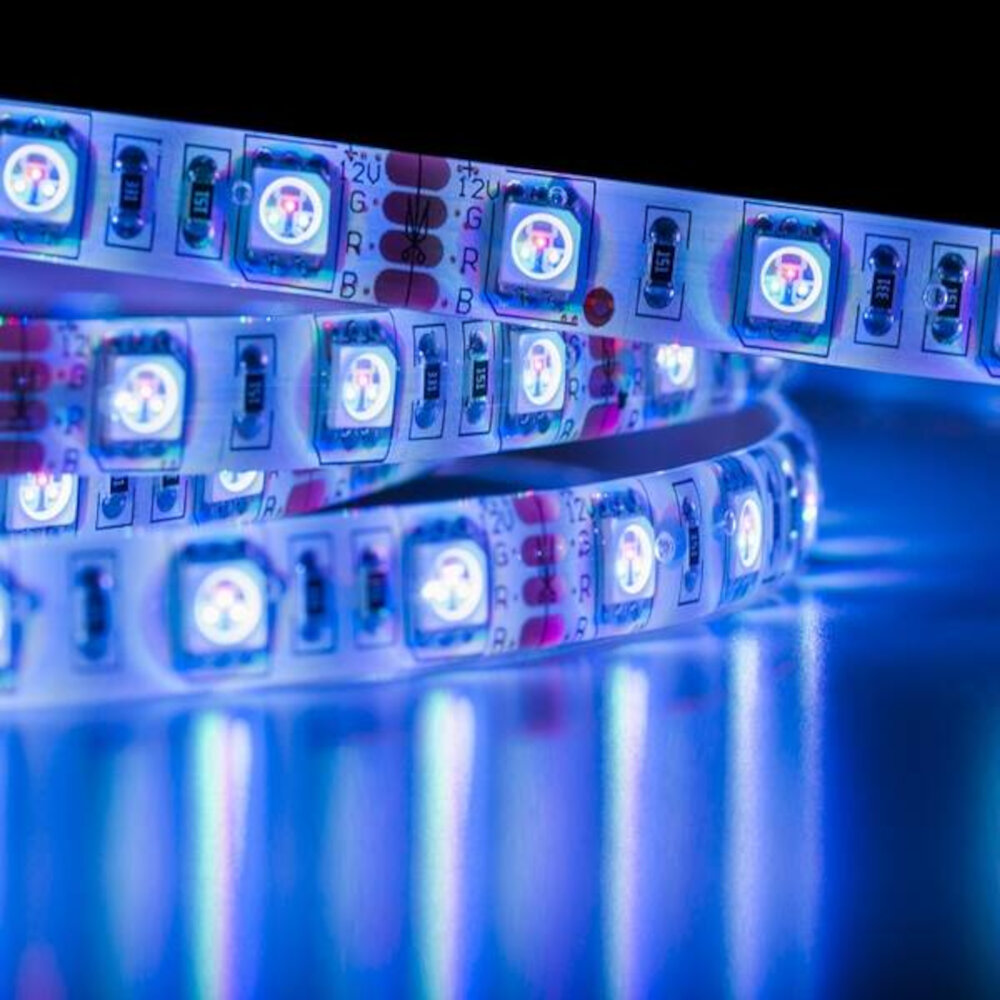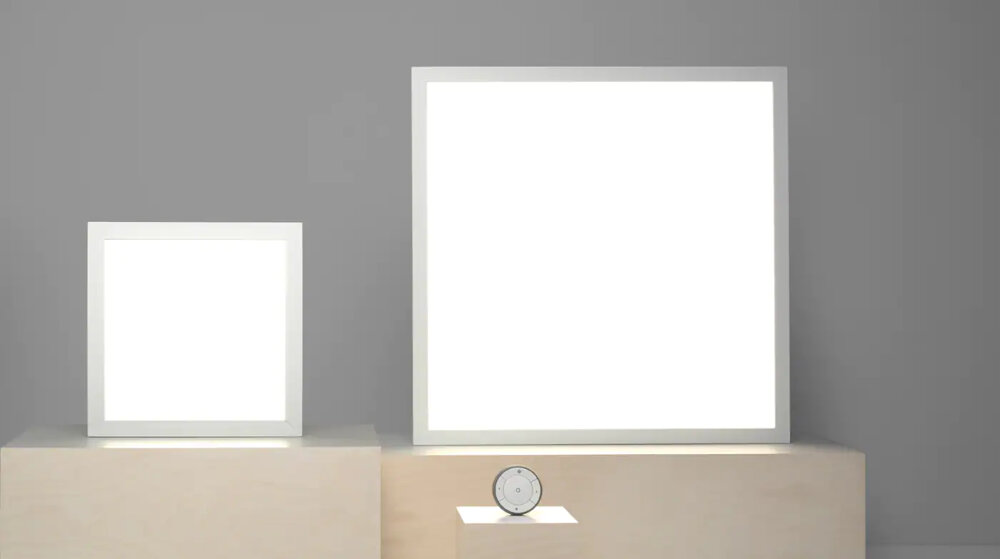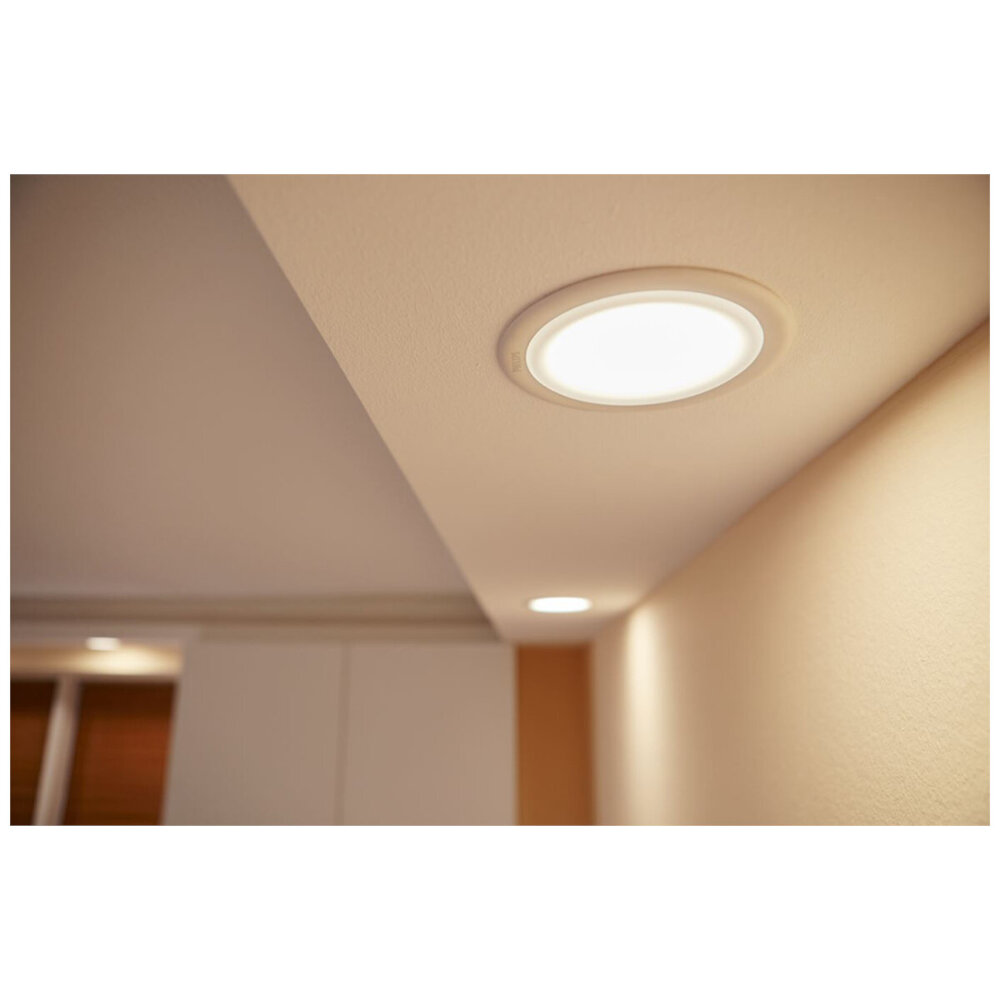Say Goodbye to Headaches with LED Lights: Best Colors for Relief

Headaches can be an absolute nuisance, disturbing our daily routines and affecting our mood. Whether it’s a mild headache or a severe migraine, the pain can be debilitating and frustrating. While there are many remedies available to alleviate the pain, the use of LED lights has emerged as an effective and natural treatment. Studies have shown that different colors of LED lights have varying effects on headaches, making them a popular choice for relief. LED lights have become increasingly popular in recent years, and not just for their energy efficiency and durability. They are also known to have several health benefits, including reducing headaches. The color of the LED light plays a crucial role in determining its effectiveness in alleviating headaches. Each color has a unique effect on the brain and body, making it important to choose the right color for relief. In this article, we will discuss the best colors of LED lights for headache relief and how they work.
Headaches are a common ailment that affects people of all ages and backgrounds. The prevalence of headaches can be attributed to a variety of factors, including stress, poor posture, lack of sleep, dehydration, and even certain foods. Moreover, the overuse of electronic devices, such as smartphones and computers, can also contribute to headaches. In recent years, researchers have found that LED lights can also trigger headaches due to their flicker rate and color temperature. However, by choosing the right color of LED light, it is possible to reduce the frequency and severity of headaches.
Understanding the Science of LED Lights

LED lights have become increasingly popular in recent years due to their energy efficiency and long lifespan. However, understanding the science behind how these lights work can be beneficial for selecting the best colors for specific purposes, such as reducing headaches. LED lights produce light through a process called electroluminescence, which involves the movement of electrons through a semiconductor material. The energy from the electrons is released as light, creating a bright and efficient source of illumination. One of the advantages of LED lights is that they can be manufactured to emit specific colors of light. This is achieved by using different types of semiconductor materials, each of which produces a unique wavelength of light. For example, blue LED lights are created by using a semiconductor material called gallium nitride. The wavelength of blue light has been found to be particularly effective in reducing headaches, as it can help to regulate the body’s circadian rhythm and reduce eyestrain. Understanding the science of LED lights can therefore help you select the best colors for specific purposes, including reducing headaches and improving overall well-being.
LED lights, or Light Emitting Diodes, are a type of lighting technology that has gained popularity due to their energy efficiency and longevity. Unlike traditional incandescent bulbs, LED lights do not use a filament to produce light, but rather a semiconductor that emits light when an electric current passes through it. LED lights are available in a range of colors and can be used for a variety of purposes, including general lighting, task lighting, and decorative lighting. In addition, LED lights are known for producing less heat than traditional bulbs, making them a safer option for use in homes and businesses. With the right color temperature and brightness, LED lights can also be used to help alleviate headaches and promote relaxation.
LED lights work by emitting light through a process called electroluminescence. Inside an LED bulb, there are two semiconducting materials that are separated by a thin layer. When an electric current is applied to the diode, it excites the electrons within the semiconductor material, causing them to jump from one layer to the other. As the electrons move, they release energy in the form of photons, which produce light. The color of the light emitted depends on the type of semiconductor material used in the LED bulb. LED lights are highly efficient, durable, and long-lasting, making them a popular choice for both residential and commercial lighting applications. Additionally, LED lights can be customized to emit specific colors, making them a great choice for creating a relaxing and soothing environment to help alleviate headaches.
LED lights have been found to be an effective way to alleviate headaches. Not only are they energy efficient and long-lasting, but they can also be customized to emit specific colors that have been shown to provide relief. For example, blue LED lights have been found to reduce tension headaches, while green LED lights have been shown to alleviate migraine headaches. LED lights are also free from harmful UV radiation and do not emit heat, making them a safer and more comfortable option for those seeking headache relief. Overall, incorporating LED lights into your home or work space can be a simple yet effective way to manage headache symptoms and improve overall well-being.
The Best Colors for Headache Relief

Headaches can be a debilitating condition that affects millions of people around the world. One of the causes of headaches is exposure to bright and intense light which can lead to discomfort and pain. LED lights have been found to be a useful tool for headache relief. Not only do they offer energy efficiency, but they also come in various colors that can help soothe and prevent headaches. Among the best colors for headache relief are blue and green. Blue light has been found to be an effective color for headache relief. This is because blue light has a calming effect on the body and helps to reduce stress levels. Exposure to blue light has been found to help in the production of melatonin, a hormone that regulates sleep, which can help alleviate headaches caused by lack of sleep. Furthermore, blue light has been found to be effective in reducing migraine pain and frequency. This makes blue LED lights an ideal choice for anyone looking for a natural and effective way to alleviate headaches.
Colors have a profound impact on our mood, behavior, and overall well-being. Each color stimulates different emotions and reactions in our brain, and this is why color psychology has become an important aspect of interior design and lighting. For instance, blue is known to have a calming effect on our minds, while red stimulates excitement and passion. Green is associated with nature and tranquility, while yellow is uplifting and energizing. The color of the lighting we choose can also affect our mood and health, as certain colors can cause headaches or eye strain. Therefore, choosing the right color temperature, such as warm white or cool white, can make a huge difference in our daily lives, especially when it comes to reducing stress, enhancing concentration, and improving sleep quality.
Headaches can be debilitating, affecting our ability to concentrate and complete daily tasks. Fortunately, certain colors have been shown to provide relief from headaches. Blue and green are two of the best colors for headache relief due to their calming and soothing effects on the mind and body. These colors can be found in LED lights, which have become increasingly popular in homes and workplaces. By incorporating blue and green LED lights into your environment, you can create a calming atmosphere that may help reduce the frequency and severity of your headaches. Whether you suffer from tension headaches or migraines, using LED lights with blue and green hues may provide much-needed relief.
Each color has its own unique wavelength and energy that affects our bodies and minds in different ways. Red is known for its stimulating and energizing properties, while blue promotes relaxation and calmness. Yellow is associated with happiness and positivity, while green is known to reduce stress and anxiety. Purple is often used in meditation and spiritual practices, and orange is said to promote creativity and enthusiasm. Understanding the science behind each color can help us use them in a way that benefits us, such as using blue lights to unwind before bed or green lights to create a calming atmosphere in a workspace. By utilizing the healing properties of color, we can improve our overall well-being and reduce headaches and other ailments.
Choosing the Right LED Lights

When it comes to choosing the right LED lights, there are a few things to consider. First and foremost, it’s important to think about the purpose of the lighting. Are you using it for reading or working? Or is it more for ambiance and mood lighting? The type of LED light you choose will depend on the intended use. For example, if you’re looking for task lighting, you’ll want to choose a light with a high color rendering index (CRI) that provides a bright, white light. On the other hand, if you’re looking for mood lighting, you might prefer a warmer, softer light that creates a cozy ambiance. Another important factor to consider is the color temperature of the LED light. Color temperature is measured in Kelvins (K) and can range from warm (2700K-3000K) to cool (5000K-6500K). Warm white light is often used in living spaces and creates a cozy, inviting atmosphere. Cool white light, on the other hand, is often used in workspaces and provides a bright, energizing light that can help improve focus and productivity. When choosing the right LED lights, it’s important to consider both the purpose of the lighting and the color temperature to ensure that you get the right light for your needs.
LED lights are highly versatile and come in various types, each designed for different purposes. Firstly, there are traditional LED lights, which are highly energy-efficient and long-lasting, making them ideal for general use in homes and offices. Secondly, there are colored LED lights, which can be used to create a specific ambiance or mood, depending on the color used. For example, blue LED lights can create a calming effect, while red LED lights can promote alertness and energy. Finally, there are smart LED lights, which can be controlled using a smartphone or other device, allowing users to adjust the brightness, color, and other settings to suit their needs. Overall, LED lights offer multiple benefits and are an excellent choice for those looking for efficient, long-lasting lighting solutions.
When choosing LED lights for headache relief, there are several factors to consider. First, it is important to select the right color temperature, as warmer light colors, such as yellow and red, tend to be more soothing and relaxing, while cooler blue and green lights can be energizing and invigorating. Additionally, it is important to choose lights with adjustable brightness levels, as bright lights can exacerbate headaches for some individuals. Finally, it is important to choose LED lights with a high color rendering index (CRI), as these lights are designed to accurately replicate natural light and can reduce eye strain and fatigue. Overall, taking these factors into account can help individuals find the ideal LED lights for headache relief that promote relaxation, reduce eye strain, and minimize headaches.
LED lights have become a popular remedy for headache relief, and many people are turning to this alternative solution. Reviews of popular LED lights for headache relief reveal that certain colors are more effective than others. Blue light, for example, has been shown to alleviate migraine pain and reduce the frequency of headache attacks. Green light is also effective in reducing headache pain, as it has a calming effect on the nervous system. Red and amber lights are less commonly used, but they can help alleviate tension headaches and promote relaxation. Overall, LED lights are a safe, non-invasive, and highly effective way to manage chronic headaches and improve overall quality of life.
Additional Tips for Headache Relief

In addition to using LED lights to relieve headaches, there are several other tips and tricks you can try to alleviate pain and discomfort. One effective strategy is to practice deep breathing exercises. Taking slow, deep breaths can help reduce stress and tension, which are common causes of headaches. You can also try using essential oils such as lavender or peppermint, which have been shown to have calming and pain-relieving properties. Simply apply a few drops to your temples or neck and massage gently. Another effective way to relieve headaches is through regular exercise. Exercise helps improve circulation and reduces stress, both of which can contribute to headache pain. Try incorporating a daily walk or yoga session into your routine to help prevent headaches from occurring in the first place. Additionally, it’s important to stay hydrated and maintain a healthy diet, as dehydration and certain foods can trigger headaches. By following these additional tips and incorporating LED light therapy into your routine, you can say goodbye to headaches and enjoy a more pain-free life.
Apart from using LED lights, there are several other methods for headache relief. One of the most effective is to practice relaxation techniques, such as deep breathing, meditation, or yoga. These practices help to reduce stress and tension in the body, which can contribute to headaches. Another option is to apply a cold or hot compress to the affected area, which can help to alleviate pain and reduce inflammation. Additionally, over-the-counter pain relievers, such as ibuprofen or acetaminophen, may be effective for some people. It’s important to remember that everyone’s body is different, so what works for one person may not work for another. It’s always best to consult with a healthcare provider if you’re experiencing frequent or severe headaches.
Headaches can be incredibly debilitating and can interfere with our daily lives. Fortunately, there are several ways to prevent them from occurring. One of the most effective methods is to maintain a healthy lifestyle by eating a balanced diet, staying hydrated, and getting enough sleep. It’s also crucial to manage stress levels by practicing relaxation techniques like meditation or yoga. Additionally, avoiding triggers such as caffeine, alcohol, and certain foods can help prevent headaches. Another useful tip is to make sure you’re using the right lighting in your home or office. LED lights in soothing colors like blue or green have been shown to reduce headaches, so consider swapping out your harsh fluorescent bulbs for softer LED options. By implementing these preventative measures, you can say goodbye to headaches and enjoy a pain-free life.
Maintaining a healthy lifestyle is crucial for overall well-being, and it can also play a significant role in preventing headaches. Eating a balanced diet, getting regular exercise, and getting enough sleep are all essential components of a healthy lifestyle. Additionally, reducing stress through relaxation techniques such as meditation or yoga can also be helpful in preventing headaches. Incorporating LED lights in the right colors can also help alleviate headaches. By taking care of our bodies and making healthy choices, we can reduce the frequency and severity of headaches while also improving our overall quality of life.
LED lights are a great way to alleviate headaches, thanks to their numerous benefits. These lights produce less heat than traditional light sources, which can help reduce the intensity of headaches. Additionally, LED lights are available in a range of colors, each with its own unique benefits. For example, blue LED lights can help reduce tension and promote relaxation, making them ideal for use in a bedroom or living room. Green LED lights are great for reducing eye strain, while red LED lights can help stimulate the production of endorphins, which can help alleviate pain. Overall, LED lights provide a versatile and effective solution for those looking to relieve headache symptoms in a safe and natural way.
In conclusion, LED lights can be a great solution for those who suffer from headaches. The right color and brightness of the LED light can help alleviate pain and discomfort. It is important to experiment with different colors and intensities to find the most effective combination for you. Additionally, it is recommended to use LED lights in combination with other headache remedies such as rest, hydration, and medication if necessary. Finally, it is important to talk to a healthcare professional if you experience chronic headaches or if your headaches worsen despite using LED lights or other remedies. By taking a holistic approach to headache relief, LED lights can be a valuable tool in your arsenal.
Conclusion

In conclusion, LED lights offer a promising solution for those seeking relief from headaches. By utilizing specific colors, such as green, blue, and amber, individuals can reduce the frequency and intensity of their headaches. It is important to note, however, that LED lights should not be used as a sole treatment for chronic headaches and individuals should consult with a healthcare professional if their headaches persist. Overall, LED lights provide a simple and effective method for headache relief, allowing individuals to live their lives with greater comfort and ease.




